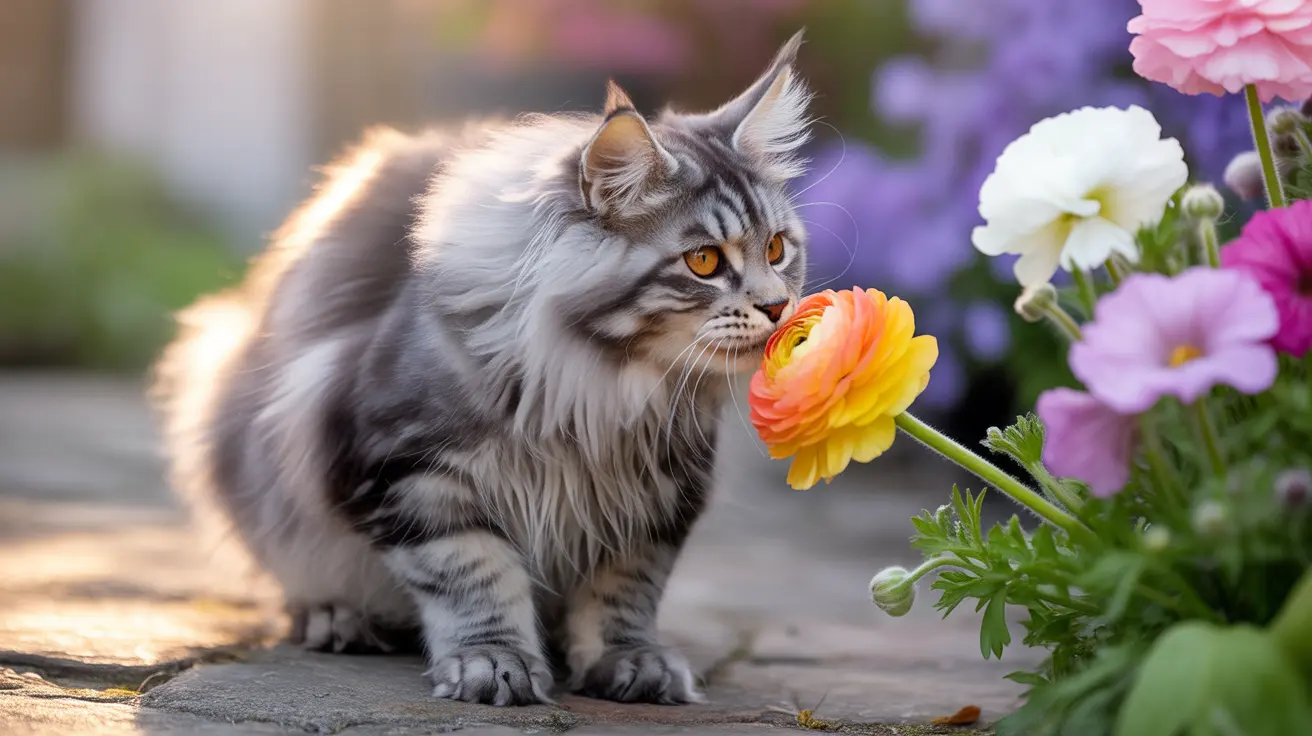Introduction
If you're a cat parent who loves gardening, it's crucial to know which plants could pose risks to your feline friend. Ranunculus, commonly known as buttercups, are beautiful flowering plants that can be dangerous to cats. These bright yellow blooms might catch your cat's attention, but they contain toxic compounds that can cause serious health issues if ingested.
Understanding the risks associated with ranunculus and cats is essential for creating a safe environment for your pet. Let's explore everything you need to know about ranunculus toxicity in cats, including symptoms to watch for and preventive measures you can take.
Understanding Ranunculus Toxicity
Ranunculus plants contain a compound called protoanemonin, which is released when the plant tissue is damaged or chewed. This toxic substance can cause immediate irritation to your cat's mouth and digestive system. While all parts of the plant are toxic, the flowers contain the highest concentration of this dangerous compound.
Even minimal contact with ranunculus can cause problems for cats. Something as simple as grooming pollen off their fur could lead to irritation. However, serious poisoning typically occurs only when cats actually eat parts of the plant.
Signs of Ranunculus Poisoning in Cats
Watch for these common symptoms if you suspect your cat has come into contact with ranunculus:
- Excessive drooling
- Pawing at the mouth
- Vomiting and diarrhea
- Loss of appetite
- Oral blisters or swelling
- Weakness or lethargy
- Difficulty walking
- Blood in urine (in severe cases)
Most symptoms appear within three hours of exposure, making it crucial to seek immediate veterinary care if you notice any of these signs.
Treatment and Emergency Care
If you suspect your cat has ingested ranunculus, don't wait for symptoms to appear before seeking help. Contact your veterinarian or an emergency animal hospital immediately. Treatment typically includes:
- Induced vomiting (if ingestion was recent)
- Administration of activated charcoal
- IV fluid therapy
- Anti-nausea medication
- Pain management
- Supportive care
The sooner your cat receives treatment, the better their chances of a full recovery. Most cats respond well to prompt medical intervention.
Prevention and Safety Measures
The best way to protect your cat from ranunculus poisoning is through prevention:
- Remove all ranunculus plants from your garden
- Keep indoor bouquets out of reach
- Create cat-free zones in your garden
- Research plants before bringing them home
- Consider installing cat-proof fencing
- Provide cat-safe alternatives like cat grass
Regular monitoring of your outdoor spaces for wild buttercups is also important, as these plants can grow naturally in many areas.
Frequently Asked Questions
Are all parts of the ranunculus (buttercup) plant poisonous to cats, or only the flowers?
All parts of the ranunculus plant are toxic to cats, including the stems, leaves, and roots. However, the flowers contain the highest concentration of the toxic compound protoanemonin.
What symptoms should I look for if my cat has ingested ranunculus (buttercup)?
Look for signs such as excessive drooling, vomiting, diarrhea, oral irritation, difficulty breathing, weakness, and changes in behavior. In severe cases, you might notice blood in urine or neurological symptoms.
How quickly do signs of ranunculus poisoning show up in cats after ingestion?
Symptoms typically appear within three hours of exposure or ingestion. The first signs are usually oral irritation and excessive drooling.
What immediate first aid or veterinary treatments are recommended if my cat eats a buttercup?
Contact your veterinarian immediately. Don't try to induce vomiting at home unless directed by a professional. The vet may administer activated charcoal, provide IV fluids, and offer supportive care depending on symptoms.
How can I safely prevent my cat from coming into contact with ranunculus plants at home?
Remove all ranunculus plants from your property, create physical barriers in garden areas, use deterrent sprays, and regularly inspect your yard for wild buttercups. Consider creating a cat-safe garden area with non-toxic plants.
Conclusion
While ranunculus plants are beautiful, they pose a significant risk to our feline companions. Being aware of these risks and taking appropriate precautions can help keep your cat safe. If you suspect ranunculus poisoning, don't hesitate to seek immediate veterinary care. Remember, prevention is always better than treatment when it comes to protecting our beloved pets.






